
Spores from green mold growing on an orange. Image source: Wikipedia.
If ever there was a measure of how bored us non-essential types are under quarantine let me note the furor over the leaked photo depicting a moldy tub of jam sold by a local restaurant here in Los Angeles. I’m not going to go into detail but if you’re curious Eater LA did a story on the initial crisis, the apology and the more important issue of labor practices in the restaurant business. That’s all out of my lane. But we can, so to speak, open the third eye on our own moldy jams.
Here’s what my go-to source on canning, the National Center for Home Food Preservation, has to say about mold in your jam and how to prevent it,
Even though sugar helps preserve jellies and jams, molds can grow on the surface of these products. Research now indicates that the mold which people usually scrape off the surface of jellies may not be as harmless as it seems. Mycotoxins have been found in some jars of jelly having surface mold growth. Mycotoxins are known to cause cancer in animals; their effects on humans are still being researched.
Because of possible mold contamination, paraffin or wax seals are no longer recommended for any sweet spread, including jellies. To prevent growth of molds and loss of good flavor or color, fill products hot into sterile Mason jars, leaving 1/4-inch headspace, seal with self-sealing lids, and process 5 minutes in a boiling-water canner Correct process time at higher elevations by adding 1 additional minute per 1,000 ft above sea level. If unsterile jars are used, the filled jars should be processed 10 minutes. Use of sterile jars is preferred, especially when fruits are low in pectin, since the added 5-minute process time may cause weak gels.
One additional tip: remove the rings once you’re done canning. Jam that leaks out during processing can creep under the ring and go moldy. The rings are just for processing and transport. Once the jars are on the shelf you don’t need them.
Initially, the restaurant in this scandal took to Instagram to defend themselves offering the excuse that their jam is low sugar and more susceptible to mold and that it’s the “same types of mold that develop on some cheese, charcuterie, dry aged beef, and lots of other preserved foods.”
As to the first point, it’s perfectly fine to make a low sugar jam but if you’re going to can it you need to use a lab tested recipe. Alternately, you can refrigerate low sugar jams but you need to use them before they go moldy.
As to the molds on cheeses and other preserved foods, the question of fungal cultures on these products are only now being studied using new genetic testing technology (1). There are beneficial fungal cultures as well as toxic ones that can develop on preserved foods. In short, our understanding of food safety issues of these types of fungal-preserved foods is evolving and complex. However, while fungal cultures are intrinsic to the preservation of certain foods such as blue cheeses, fungal cultures don’t belong on jam. The restaurant has since promised to follow food safety practices regarding the product they package as well as what they serve in-house.
Inner Mold
Why, in the midst of a global pandemic crisis did we all get so caught up in the story of a restaurant with moldly jam? Part of it is the growing resentment against the sort of folks (affluent, aging Silver Lake hipsters such as me) who can afford a $9 slice of toast at this particular cafe while thousand of people in Los Angeles are facing eviction or already homeless.
But there’s more to it than just that. In my weaker moments I will sometimes binge old episodes of Gordan Ramsey’s Kitchen Nightmares. I’m not proud of this and after falling into Kitchen Nightmare hole I wonder what attracts me to a show that’s so repetitive. Every single episode follows the same trajectory: in the first half we see a failed restaurant owner wallowing in laziness and expired tubs of chicken wings. In the second half Daddy Ramsey comes along to yell profanities (in the American version ’cause that’s how we roll here) and redeem the fallen owner.
Perhaps Kitchen Nightmares holds up a mirror to our own moldy souls while offering the promise of a quasi-religious redemptive cycle. We’re all caught up in the shiny distraction of the internet and the latest Netflix series while stuff rots in the kitchen and we neglect our chores and those around us. This is part of what makes this jam scandal so rubbernecky in the midst of much more serious problems. Unfortunately, Daddy Ramsey ain’t gonna drop by and whip us all into shape. We’re going to have to join together to un-jam our moldy jam.
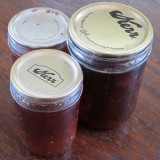
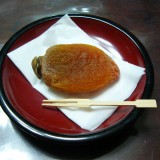
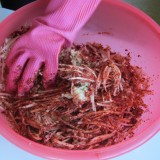
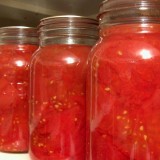

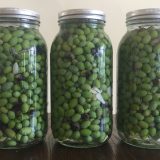
My reaction was a bit different. I was one of the Volkswagen owners who bought a TDI in a good faith effort to lower my emissions, only to be betrayed by a company whose executives should be languishing in prison. I felt betrayed and I also felt like a total dupe for believing them.
When I read the article about Sqirl, all I could think about was whether my favorite locavore-esque haunts from my Seattle days were really just a great big fraud. And my efforts to not just eat at a restaurant chain were really just falling for yet another ruse. Perhaps the extra money I was spending on (fill in the blank trendy food) was really someone’s best artistic effort in the kitchen….or maybe we were all once again a bunch of schmucks.
What’s the point of taking a risk to seek out interesting things and support unique efforts if you’re just feeding into an abusive work environment? Is there any actual difference between the Sqirls of the world and the rest of corporate America?
(sigh)
I don’t see that the changing demographics of the area had anything to do with it. Things change. Change creates friction until things find their own level. This is a dynamic that plays out everywhere all the time.
The real issue is that the owner/operator of Sqirl was dishonest. Dishonest about a secret space that evaded inspection. Dishonest about what they served their customers, knowingly putting them at health risk. And then they were dishonest with their employees and to the public in crediting authorship and in making a lame and insincere apology.
I don’t know why Sqirl is still in business after this scandal. Although I can see that it would be traumatic for the employees, the owner showed her contempt for the public and doesn’t deserve the public trust OR the approval of inspection officials. And over what? A tub of fruit and sugar was probably the smallest capital expense the restaurant incurred. It could have been tossed and replaced at minimal cost and in a few hours time.